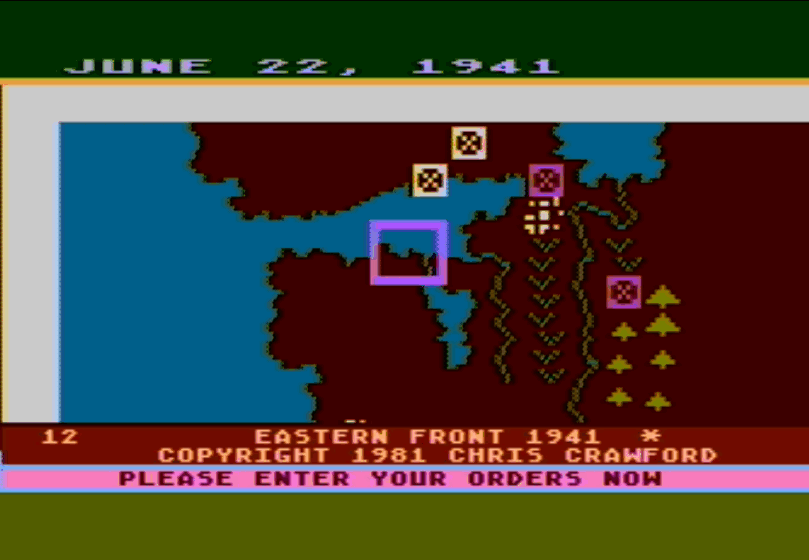
– Leutnant Narwhal ! How come there are Russians behind our lines, wrecking our supply lines
– We got outsmarted, Generaloberst!
– Outsmarted ? By the Soviets?
– Yes, our forces advanced toward them but the Soviets did the unexpected. They side-stepped. As you know, we can only give orders to our divisions every week, so by the time we recalled our forces the Soviets were feasting on our sauerkrauts!
Chris Crawford’s Eastern Front 1941 is probably the highest-profile game I have covered so far. It is sometimes considered the third killer app of the Atari 8-bit systems (after Star Raiders in 1979 and the port of Space Invader in 1980), it is always considered the killer app of the Atari Program Exchange, it introduced computer wargaming to thousands of people and it positioned its designer and coder Chris Crawford (already known to this blog for his Tanktics) as the leading game designer of his time. After Eastern Front 1941, Crawford acquired an aura equivalent to Sid Meier today – there is a reason why he would pen the very first article of the first issue of Computer Gaming World.
Eastern Front 1941 was sold starting August 1981 through the Atari Program Exchange (aka APX). APX had been set up in February 1981 by Atari to sell by mail-order games developed externally. The objective was two-fold: expand Atari’s software catalogue and make money out of the creativity of thousands of would-be developers, an approach not too different from today’s Apple Store or Google Play. APX was massively successful but like so many things it would end in 1984, probably as a consequence of the video game crash of 1983. After 1984, Atari would sell directly under its name the best third party programs it received.
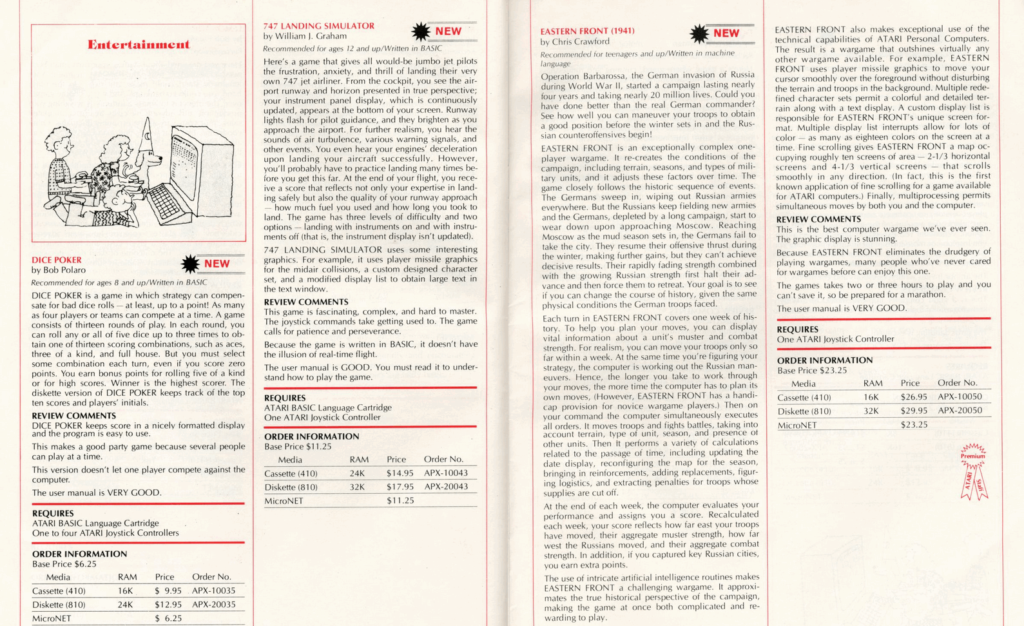
Eastern Front 1941 was so innovative, so technically advanced and so successful (dozens of thousands copies sold in a few months) that it would be reedited and sold directly by Atari in 1982. The Atari edition includes a few extra animations during turn resolution but more importantly comes with several scenarios of increasing complexity (including on game rules) instead of just one. The 1982 edition also comes with by far the best video game manual I have seen on this blog so far, but more on that in the Review and Rating.
I am going to play the Atari edition, but with the one scenario that was available in the initial APX edition of the game – now called the “advanced” scenario :

The game starts on the first day of Operation Barbarossa. The German army and its Romanian allies are massed on the border, facing the Soviet forces.
Thanks to its brand new scrolling technology, I can assess the general situation seamlessly :
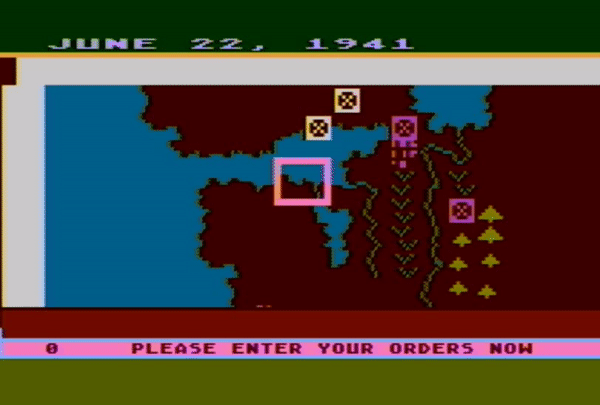
This allows me to piece together a general view of the situation :
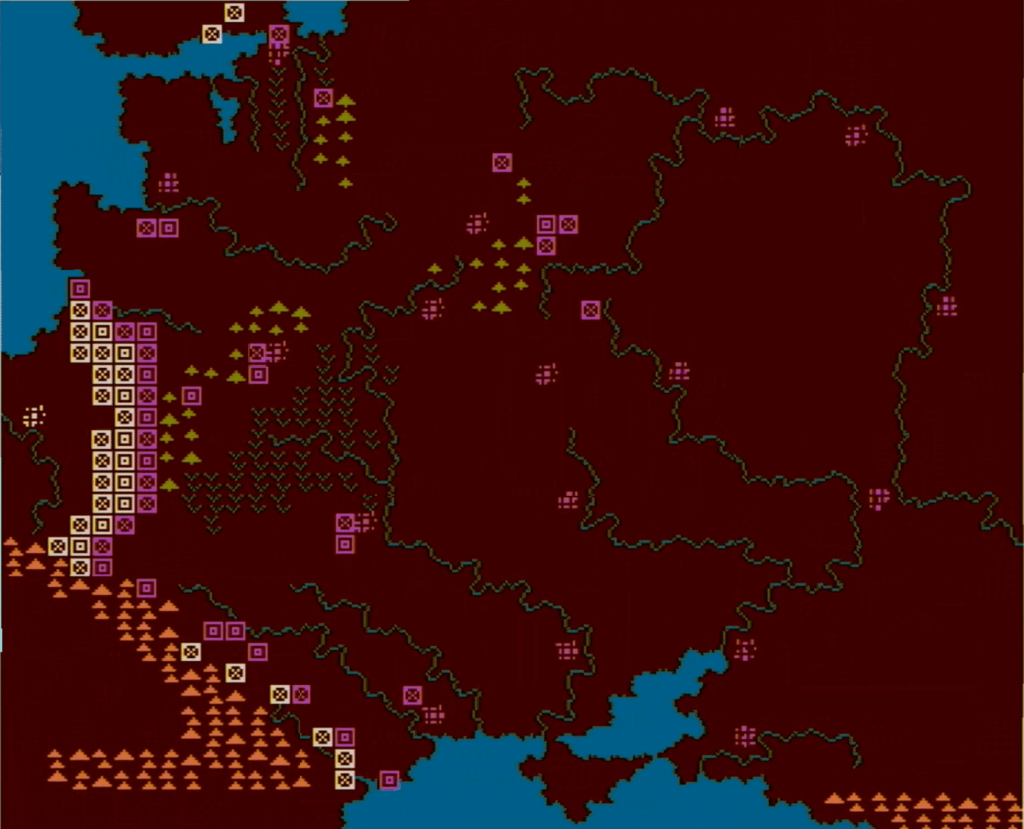
The Germans outnumber the Soviets in the North, though along the Romanian border it is rather the opposite. In addition, not all units are created equal. The Romanians in the South are weaker than the Germans, though unlike so many games not to the point of being useless.
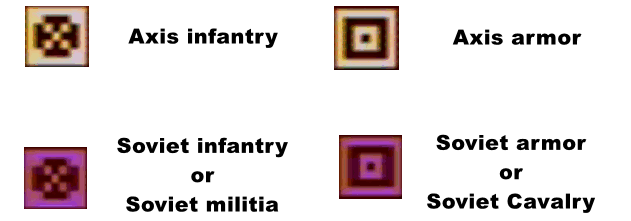

As for the Soviet units, their quality was all over the place. A Soviet infantry “Army” could match a German Corps, but their armors and cavalry start very weak.
This is the initial situation anyway. Soviet reinforcements would come, and those will be way more powerful units.
Based on this, the plan for Summer 1941 is set up :
- Destroy as many of the Soviet units on the border as possible, even if it means delaying the movement toward the Soviet cities. This meant that the 3 Romanian units will have to double-back to support the Germans in the Southern front.
- Once this is done, divide my force in 3 :
- “Army Group North” will move toward Leningrad, which should be taken this season – “freeing” the Finnish forces which will then be able to reinforce the Northern spearhead,
- “Army Group Center” will move toward Moscow, which could even possibly be taken before October,
- “Army Group South” will move as close as possible to Stalingrad
- A small force from Army Group South will be detached to occupy Crimea before it gets reinforced,
- Under no circumstances should the Germans, especially the tanks, waste their time in the central Pinsk swamps.
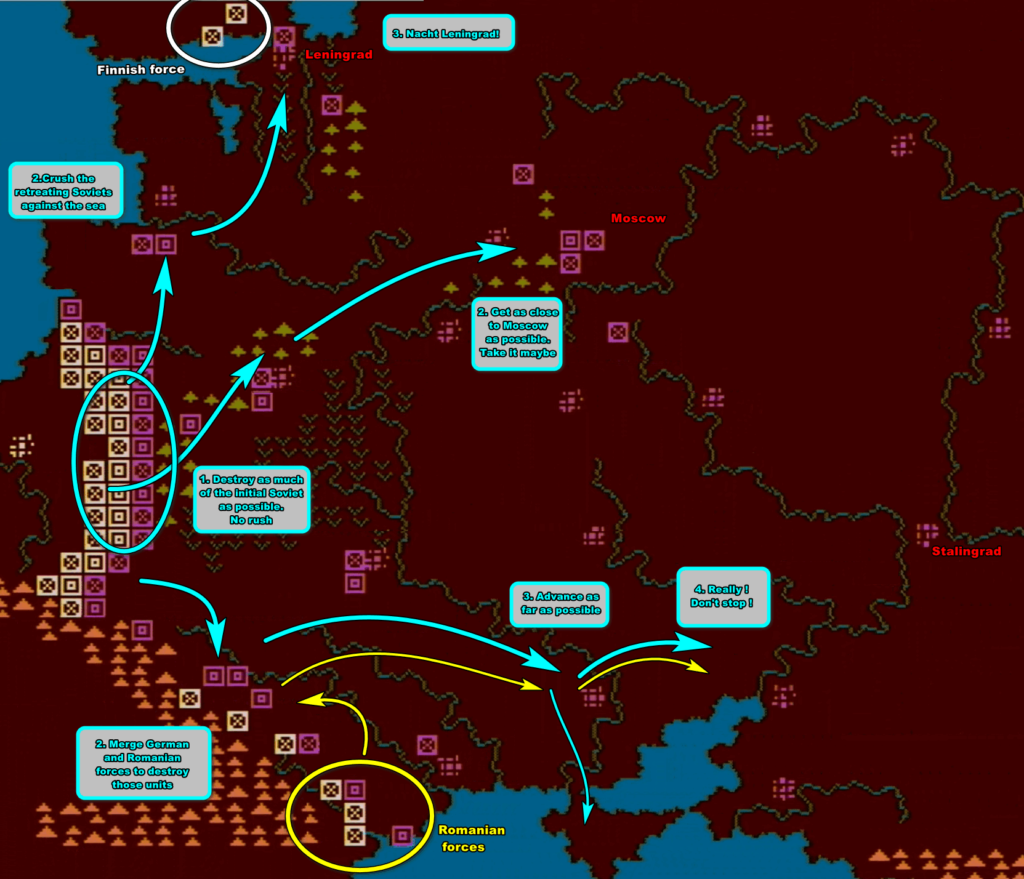
And then, the offensive starts.
The border is easily passed. With nowhere to retreat due to German pincer movements, two Soviet infantry armies are immediately annihilated :
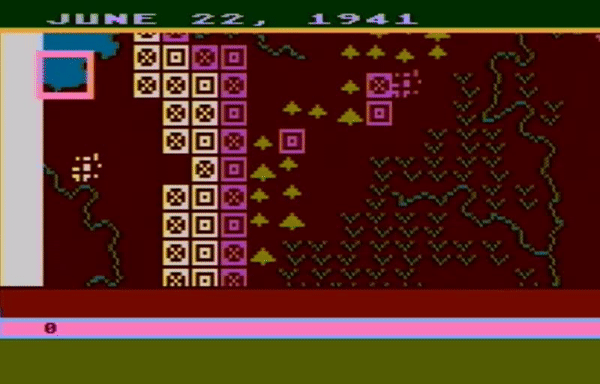
On the Northern part of the front, the Soviets are pushed back week after week, though a significant number of Soviet units manage to avoid destruction, often by retreating to the Pinsk swamps, where pursuit is difficult.
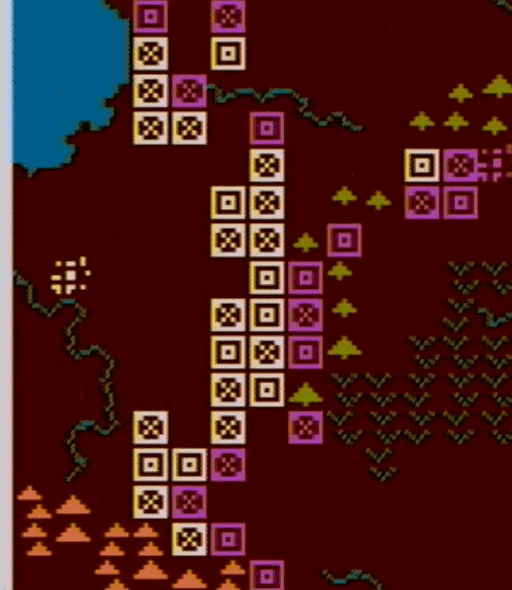
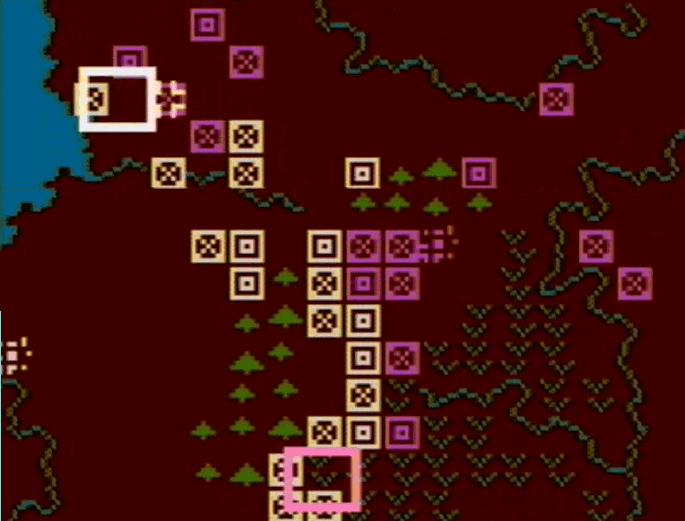
In the South, the situation for the outnumbered Axis forces is initially more difficult, but by the 20th of July, a large Soviet pocket is surrounded :
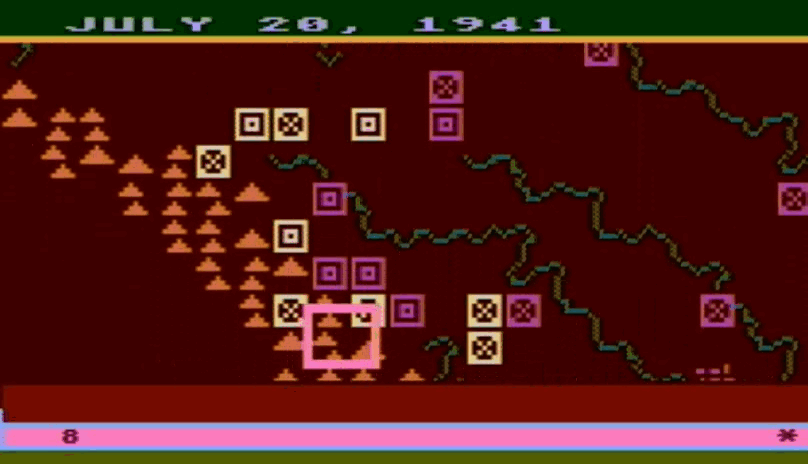
Units are at risk of not receiving supplies (and thus fight at half-strength) if they cannot trace an horizontal line to their border of the map (left border for the Germans, right border for the Soviets). The horizontal line ignores terrain, but is stopped by enemy units. A unit without an horizontal line may still be considered supplied, if it can draw a line not too long and without too many “twists and turns” (terms from the manual) to “its” side of the map ; even then in those circumstances the supplies will not be consistently received.
In our case, the Romanians are cutting the Soviet supplies. Of course, the Romanians themselves are at risk of seeing their own supply line cut, but they need fewer “twists and turns” to their side of the map than the Soviets.
One week later, the situation seems solid : many Soviet units have been destroyed, though of course Soviet reinforcements are pouring in. In the North, numerous Soviet units have been totally isolated, their back against the Baltic sea. Finally, there is an opening for a quick push toward Leningrad :
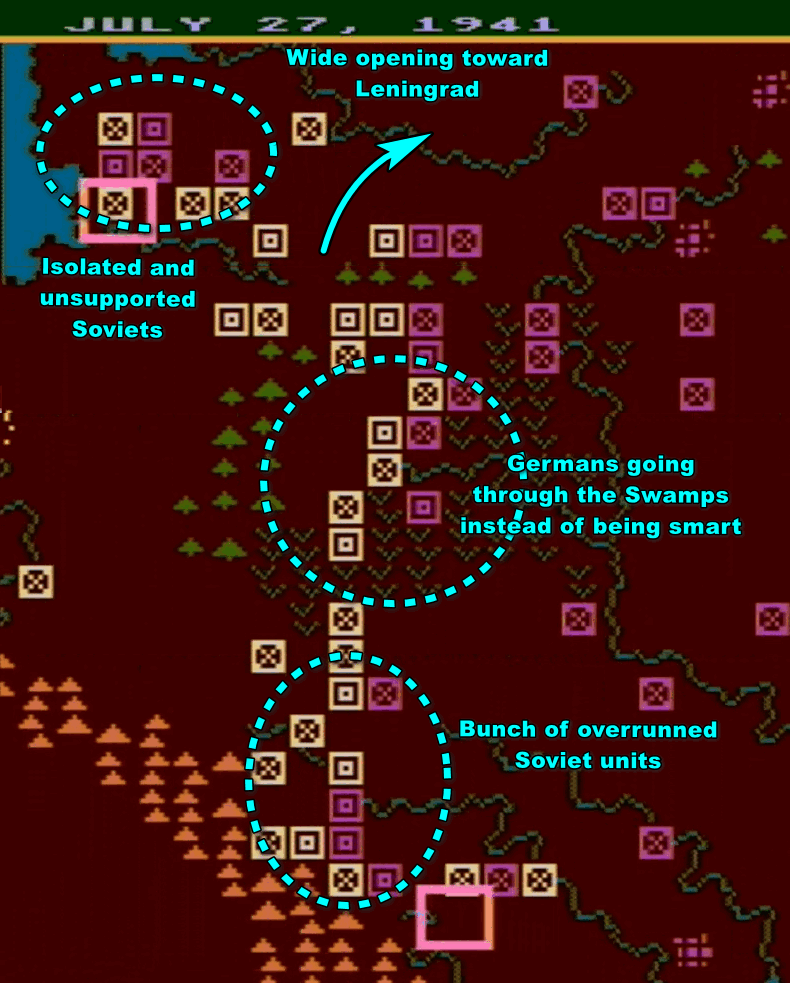
The only cause of concern is the number of units engaged in the swamps of Pinsk. This had been a no-go in my initial planning.
In early August, the push to Leningrad starts :
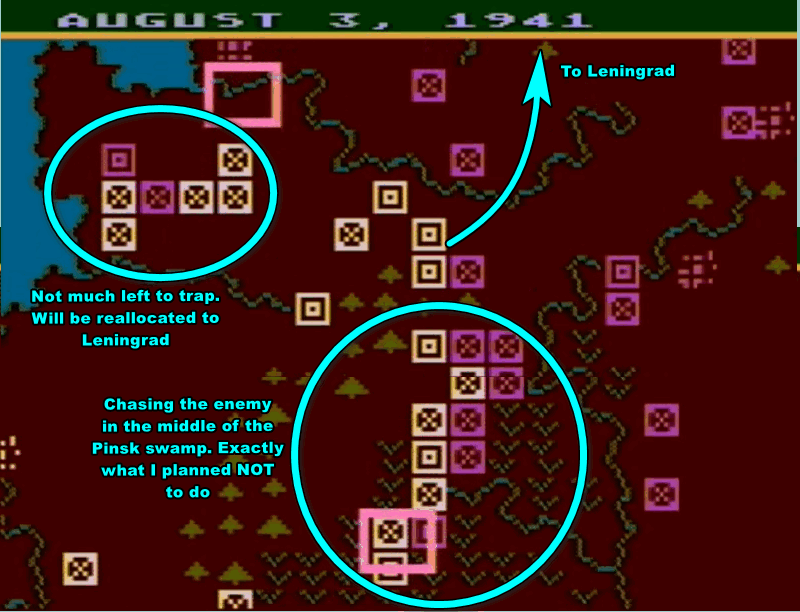
Leningrad seems within reach by the middle of August, with one armored corps beelining to the city, and another positioning itself to block any reinforcements.
But doing so, the Germans have overextended, and there is now a gap between Army Group North and Army Group Swamp. The Soviets are moving their reinforcements into the gap as they arrive:
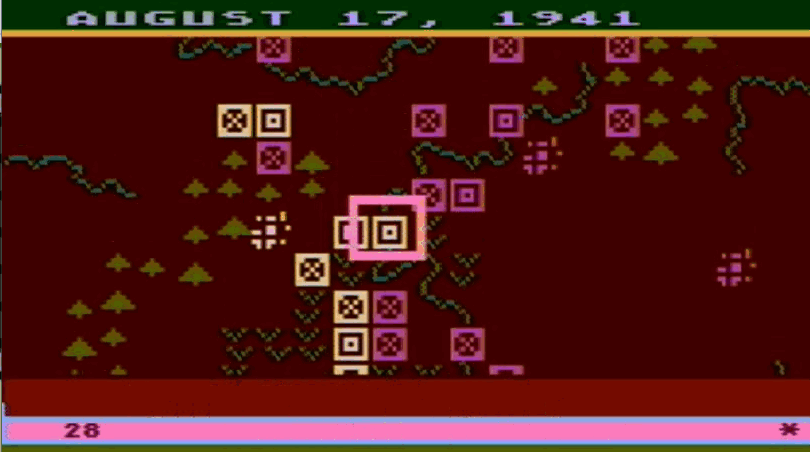
By the end of August, the campaign in the North could go either way :
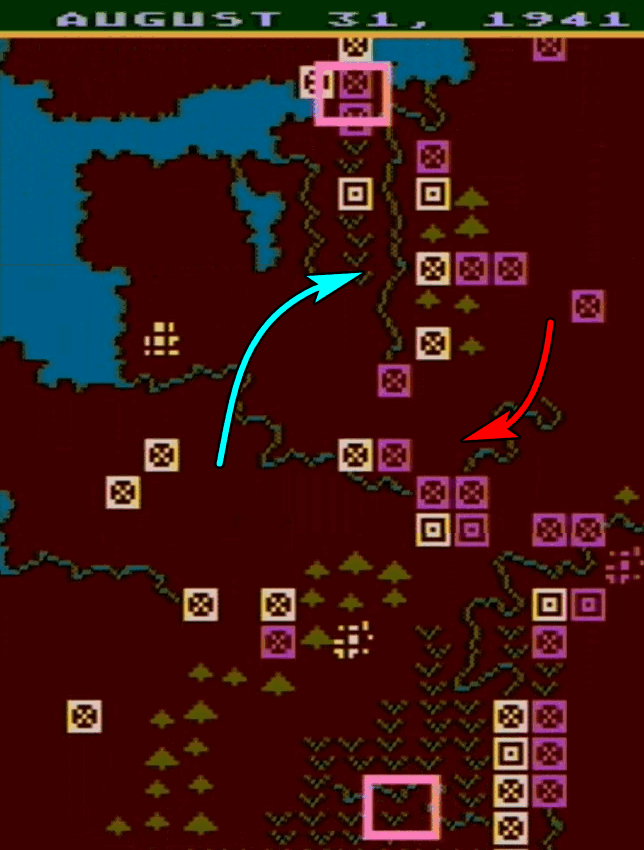
Several German units which rushed in to plug the gap are isolated and destroyed – including an elite Panzer Corps.
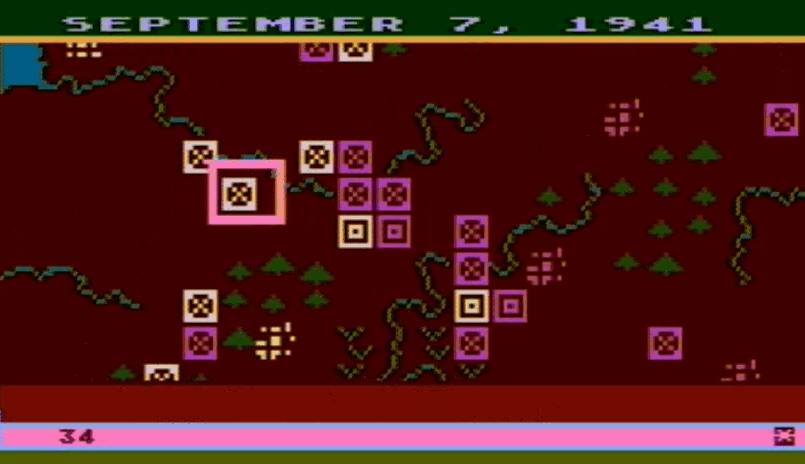
Finally Leningrad falls on the 14th of September ! The Finns can support the top of the frontline. The space between Army Group North and Army Group Swamp is still a mess though, where it is not clear who is surrounding who :
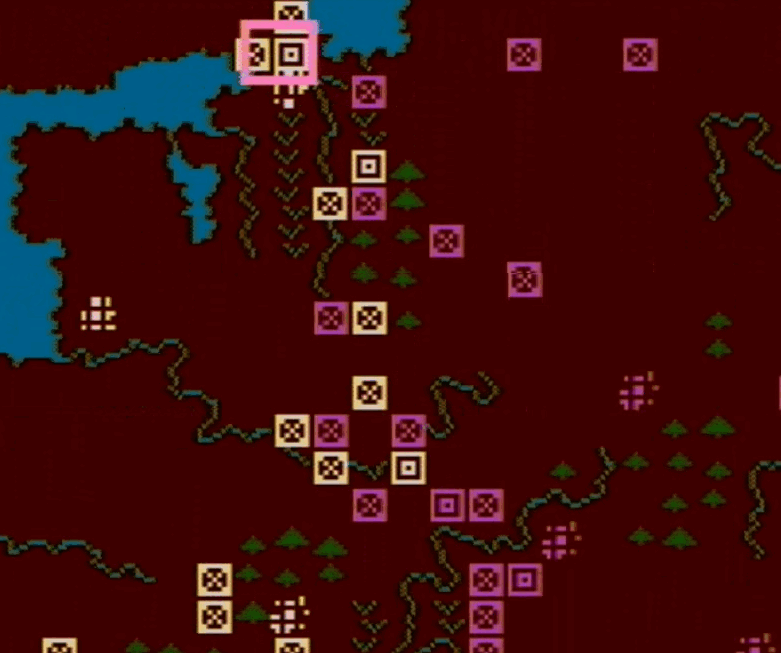
Of course, the situation between the Leningrad push and the center of the front (currently in the middle of Pinsk marshes, don’t ask) is still unstable, but by the very end of September the Germans reestablish a semblance of frontline using the last reinforcements that are going to be available in this campaign.
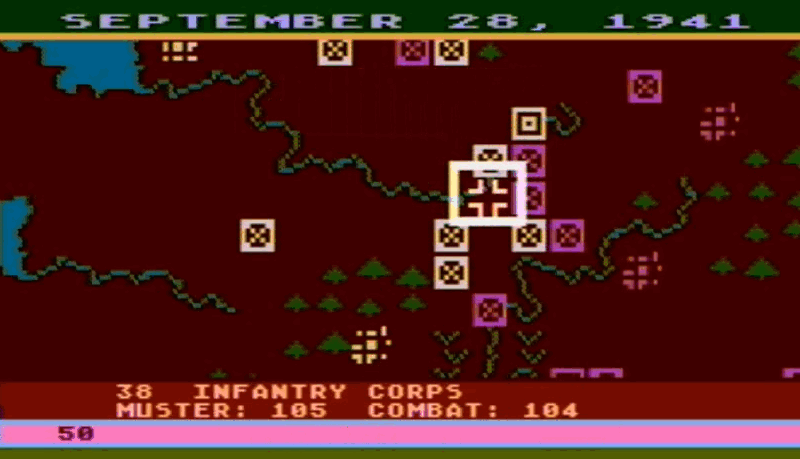
One of the reasons for that gap is that the Germans have over-allocated reinforcements (including more Romanian units, an unimpressive Hungarian tank corps and even less impressive Italian “volunteers“) to their Army Group South in Ukraine. Therefore, this Army Group South progresses pretty much unopposed, and rolls over any opposition.
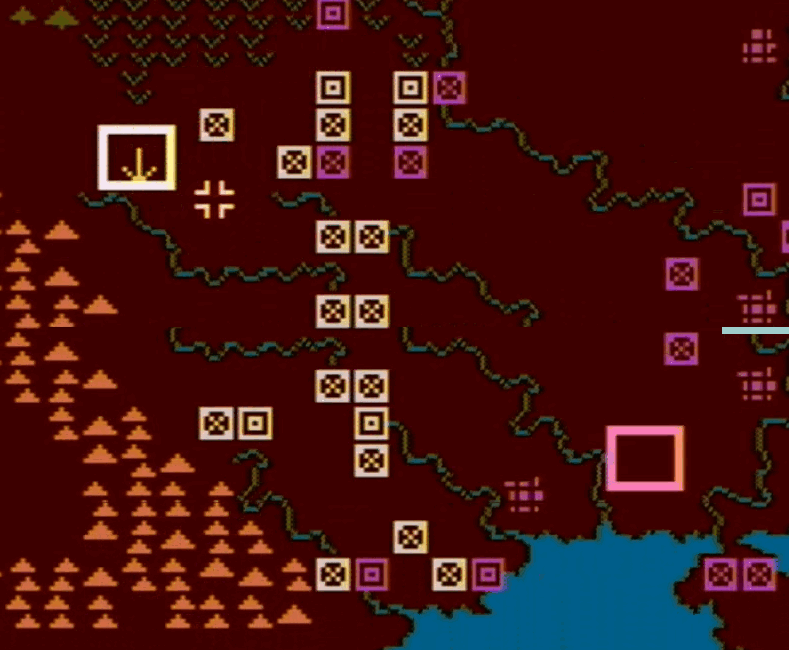
Late September, they even manage to trap a Kessel of Soviet units :
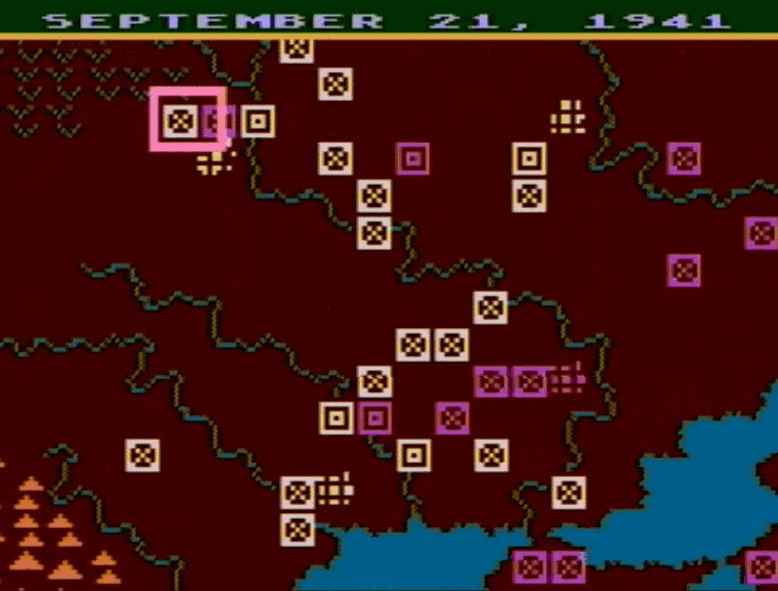
And then, the rain starts.
All strategic operations stop as the roads are full of mud and the trucks can not advance. All units are massively weakened, effectively fighting as if they were out of supply.
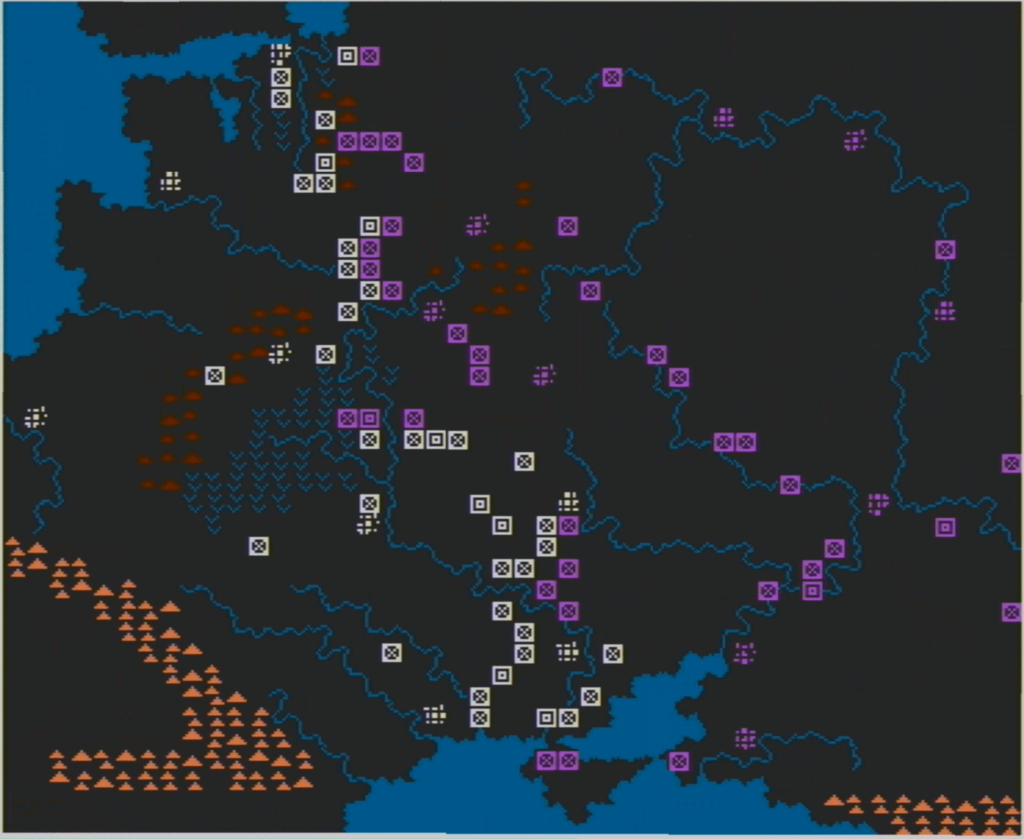
There are not many battles in October. Both sides use this opportunity to reorganize their forces and prepare for winter.
Winter is here !. It is freezing, but at least the roads are not muddy anymore, offensives can resume.
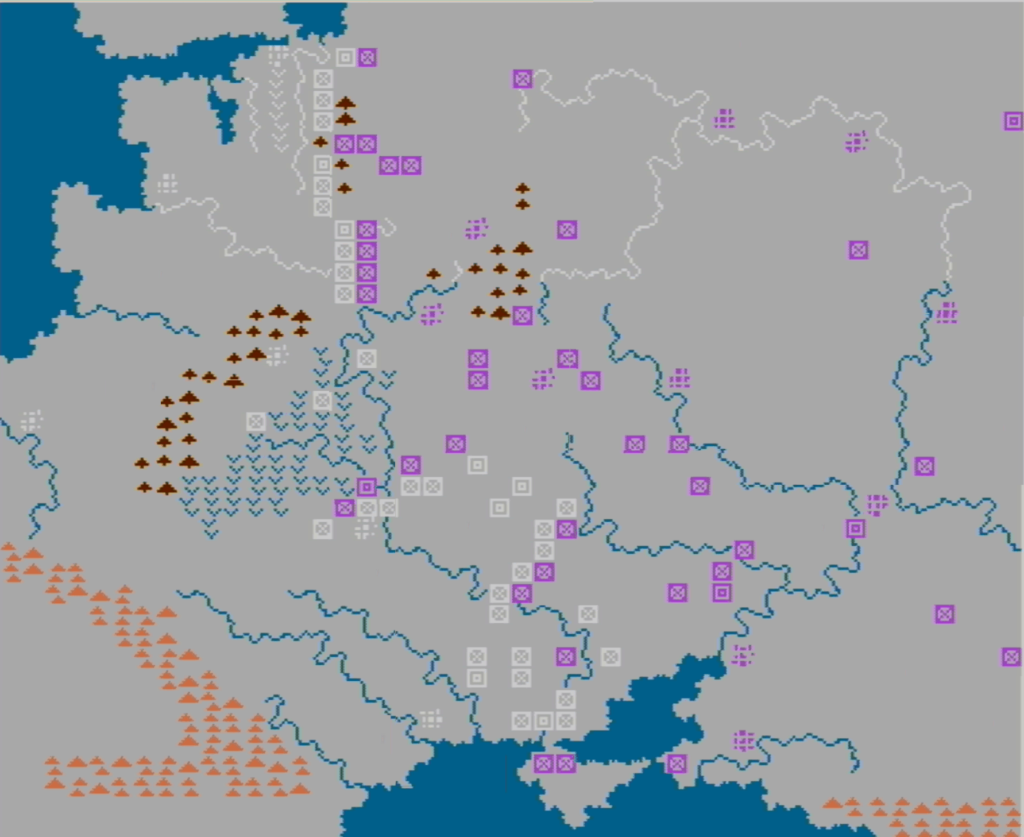
In winter, the supply rule changes. Even if the Germans can trace a direct horizontal row to their side of the map, they can still be out of supply – and the further away in the East, the more chance to be out of supply. The allowance for “twists and turns” is also more limited.
Assessing the result of the summer campaigns, there had been obvious failures : the Germans are nowhere in sight of Moscow, and they are even further away from Stalingrad. Crimea has been fortified by the Soviets. On the other hand, Leningrad has been taken and so many Soviet units have been destroyed that the Reds have not managed to rebuild a front line in the South. Moreover, German armored formations are concentrated in a salient between Kharkov and Kiev, and can strike decisively North.
The new plan is to ignore Stalingrad fully, and try to snatch Moscow by doing a massive flanking maneuver from the South which can destroy the units currently holding the frontline North of the swamps. This flanking move will be supported by a smaller one from the North, if possible.
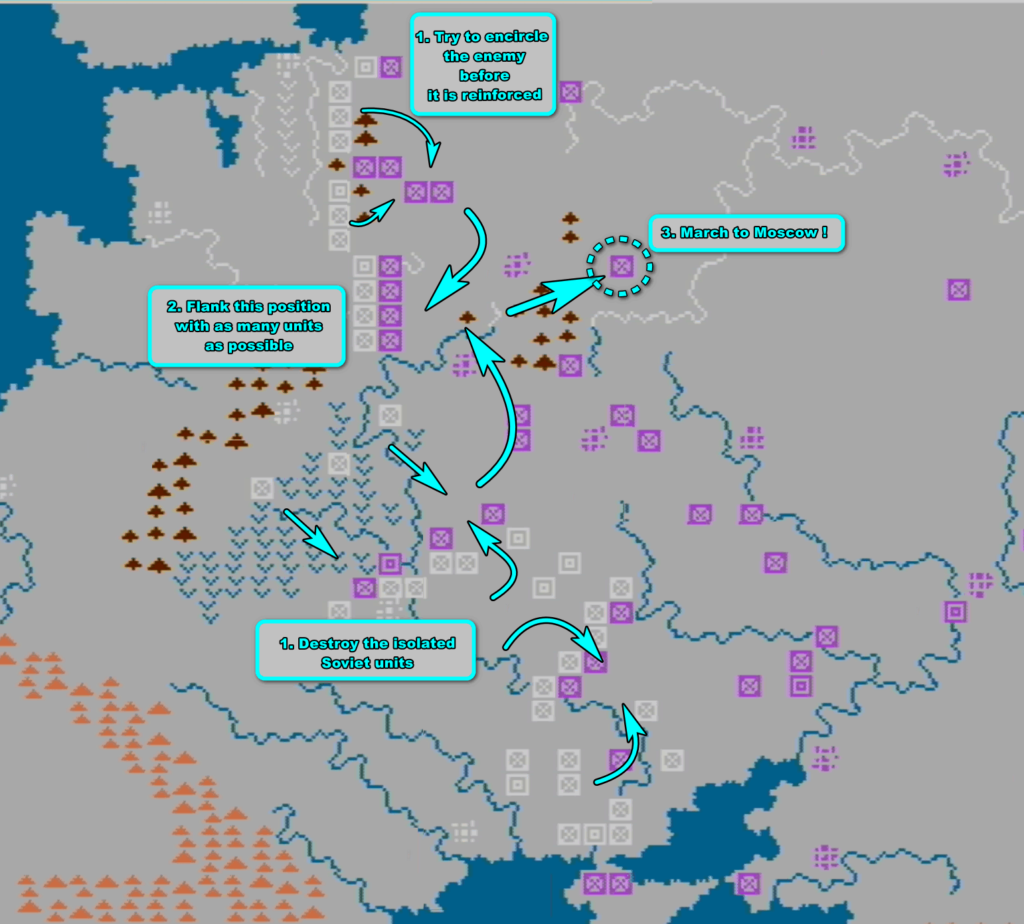
Of course, this looks nice on paper, but I will be fighting stronger and stronger Soviet units (though so far I managed to destroy them at the same speed as they were arriving) with units that will be frequently out of supply due to winter. And of course, I cannot expect any more reinforcements.
The destruction of the Soviet armies in the South-East goes well, as I could block their retreat easily :
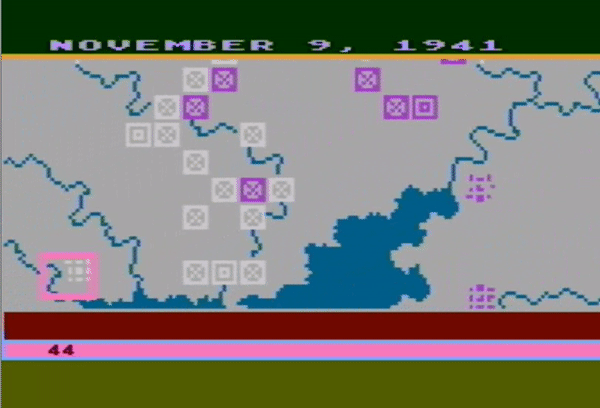
And the Soviet units that were close to the swamps are destroyed just in time to allow me to flank their new frontline :
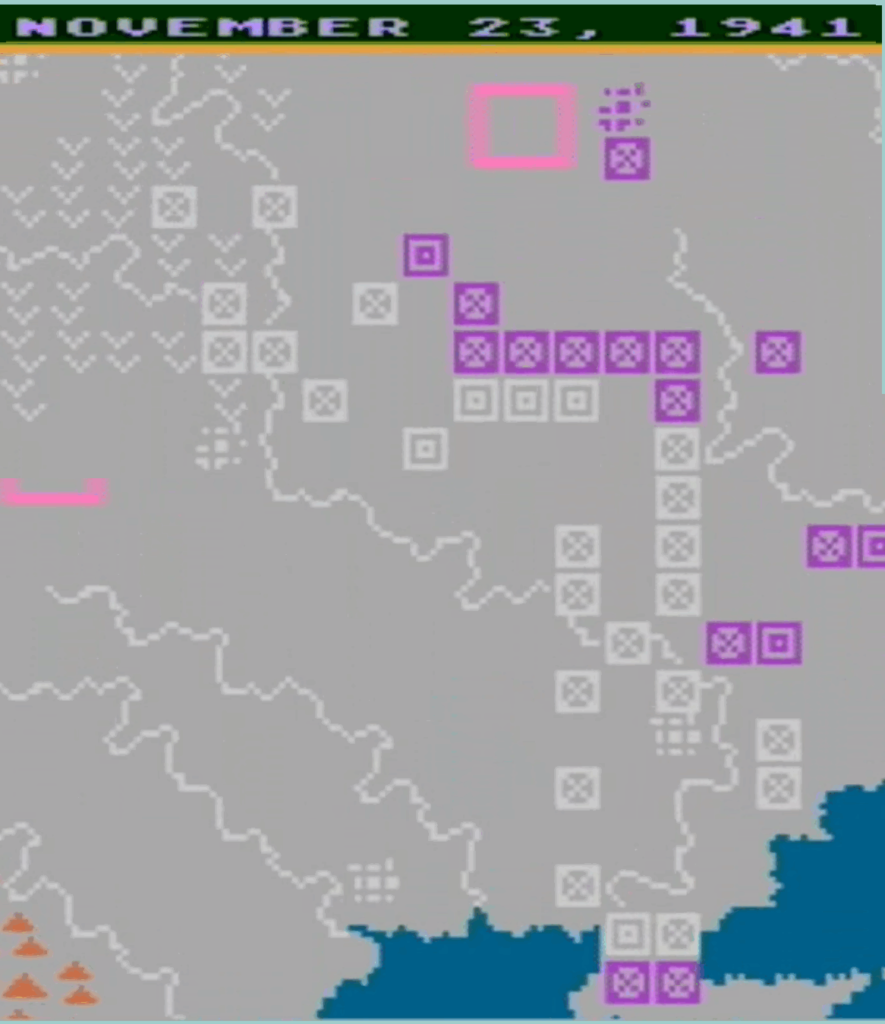
And this is good, because in the North the Germans are at the moment only slowly pushing the Soviets, and even then in some places it is the Soviets that are pushing the Germans.
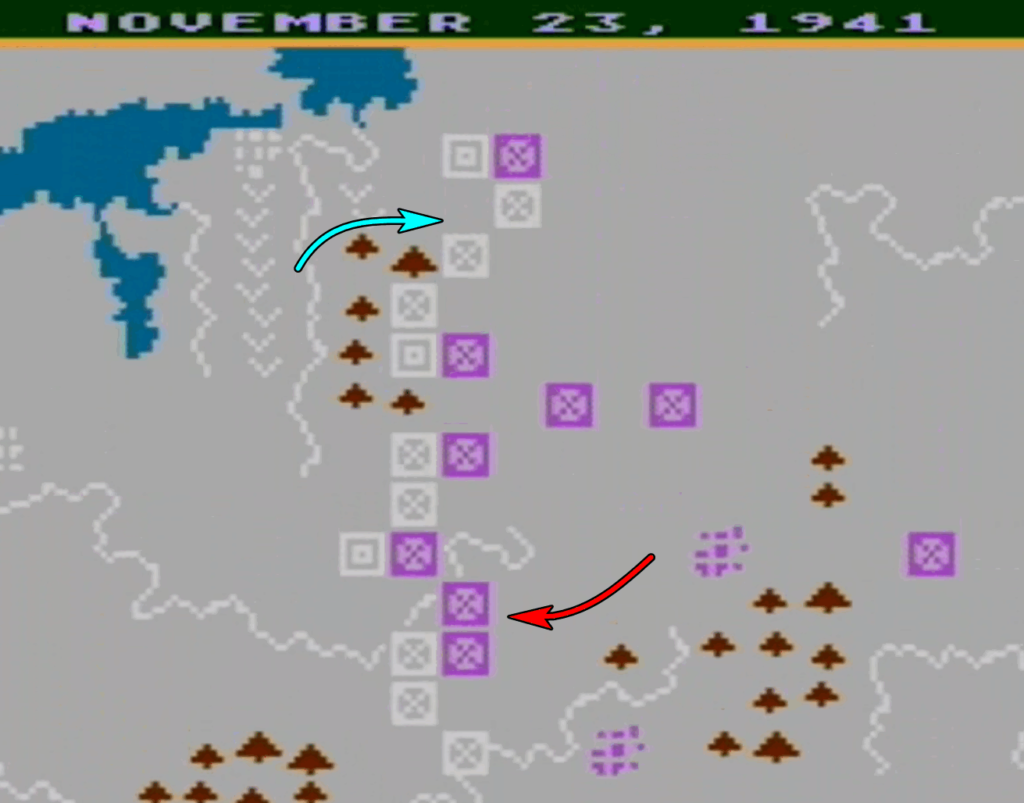
In early December, the pincer movement in Northern Ukraine has started. The better Soviet units are assailed from all sides, and don’t have any place to retreat. Some forces can already be detached from the South to seize Smolensk and support the Northern Front :
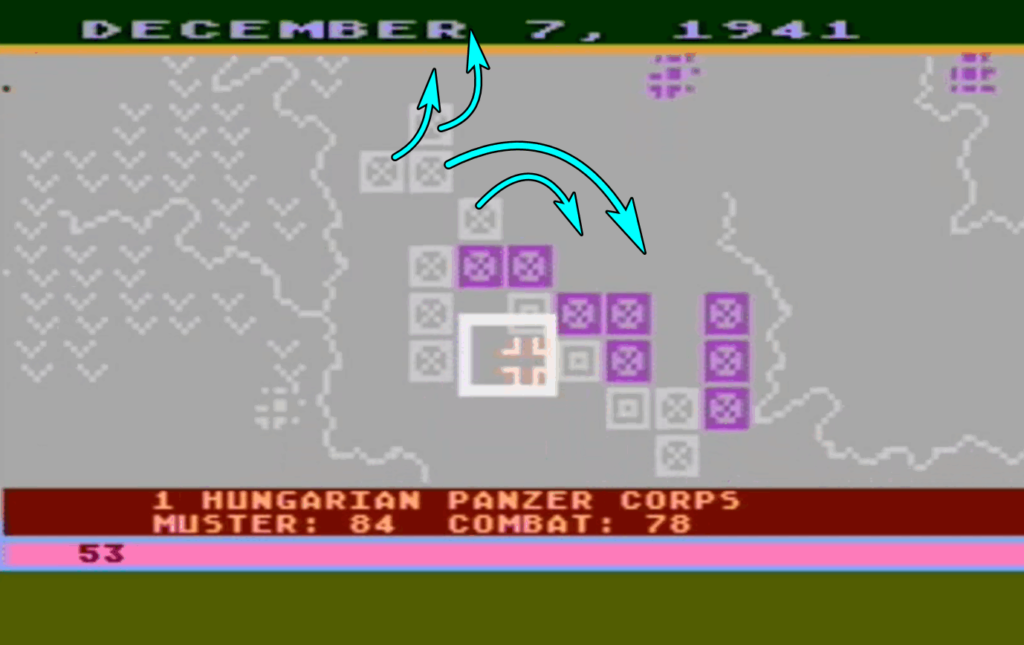
The trap closes on the Soviets mid-December :
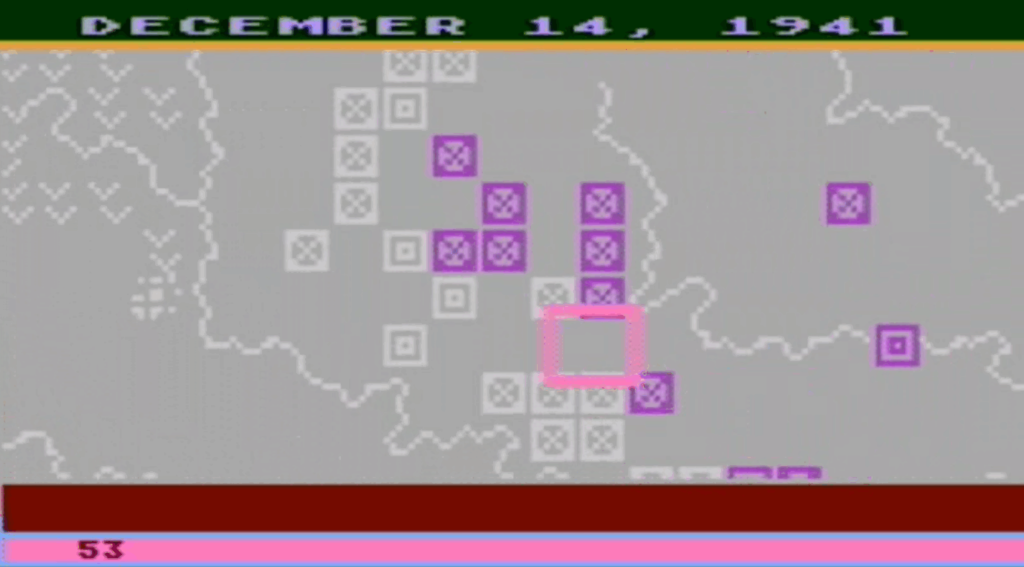
By January 1942, the Soviet Southern front has collapsed :
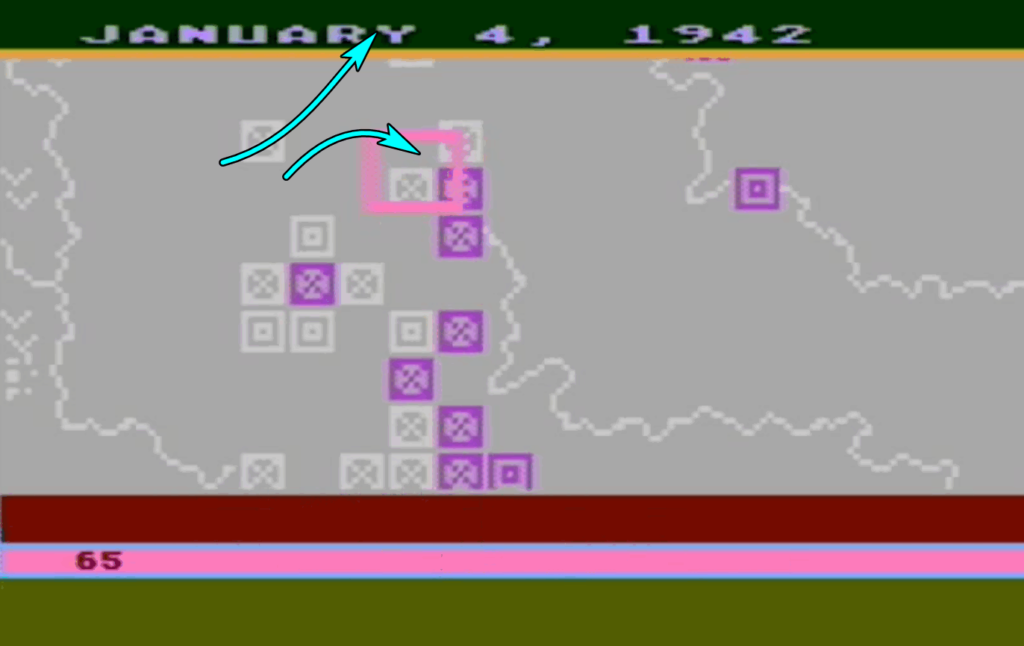
And mid-January 1942, here is what is left of the powerful Soviet armies in Ukraine and on the Don :
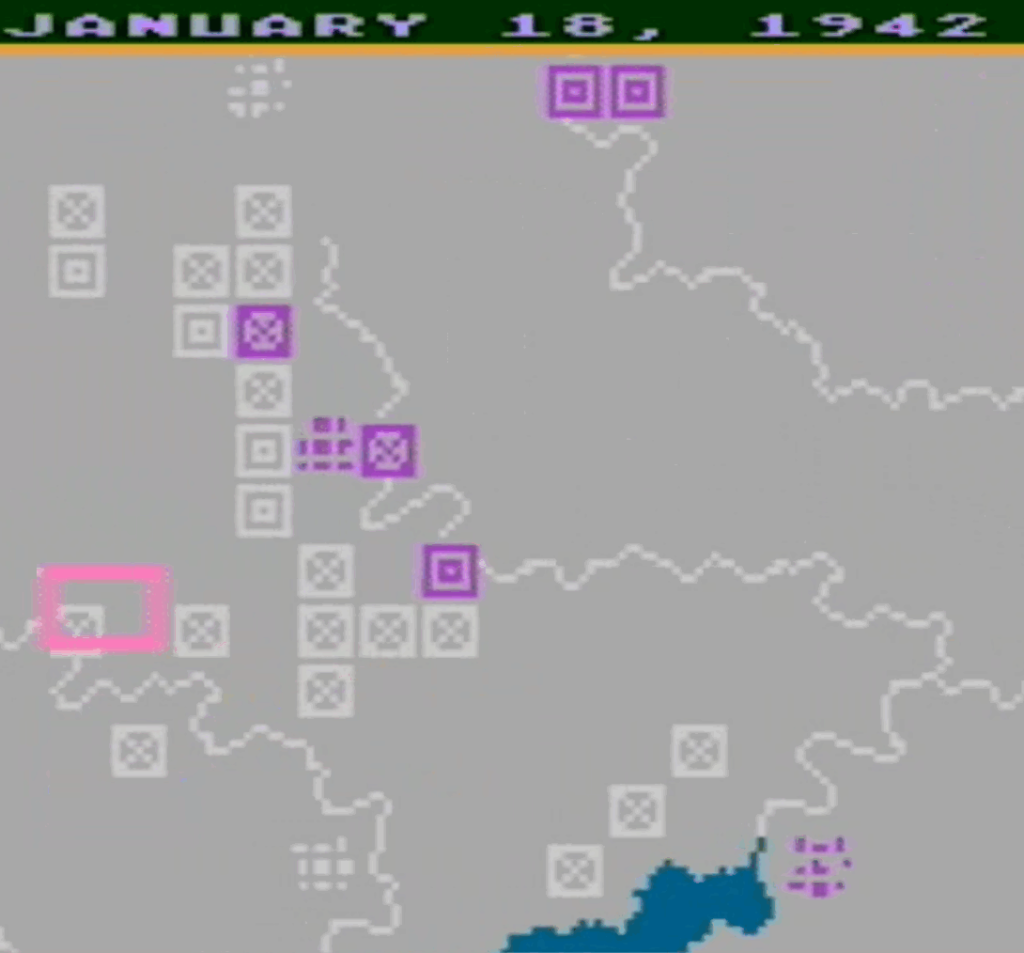
In the North, the Germans have gained the upper hand in December, but it is the arrival of reinforcements from the South that is the turning point. By late December 1941, the Soviets are destroyed on this front as well.
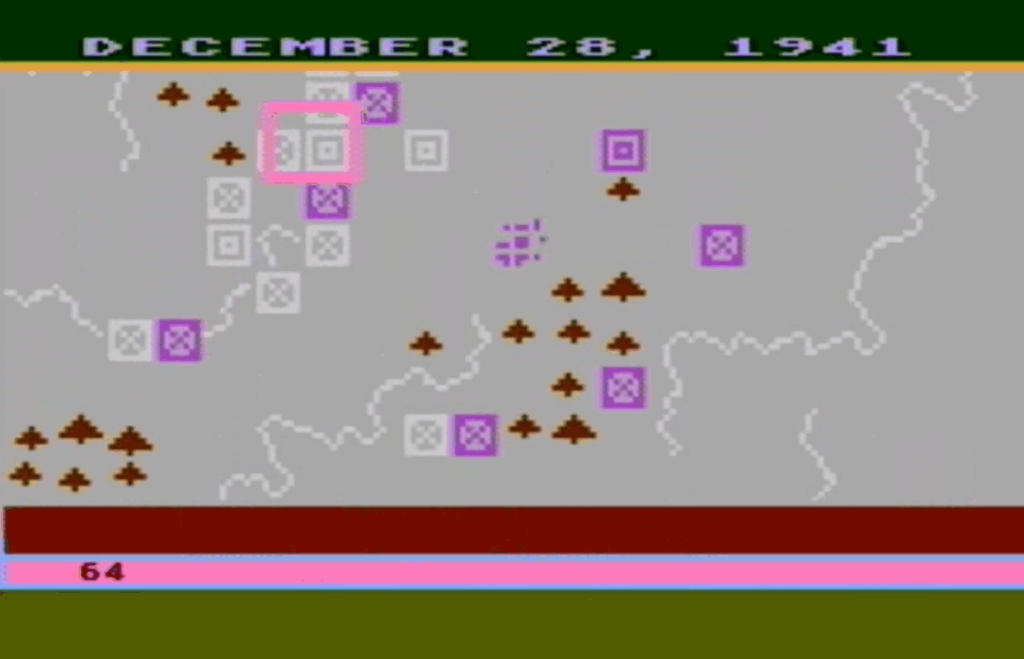
Soviet resistance has ended. Moscow is besieged late January, and taken the first days of December :
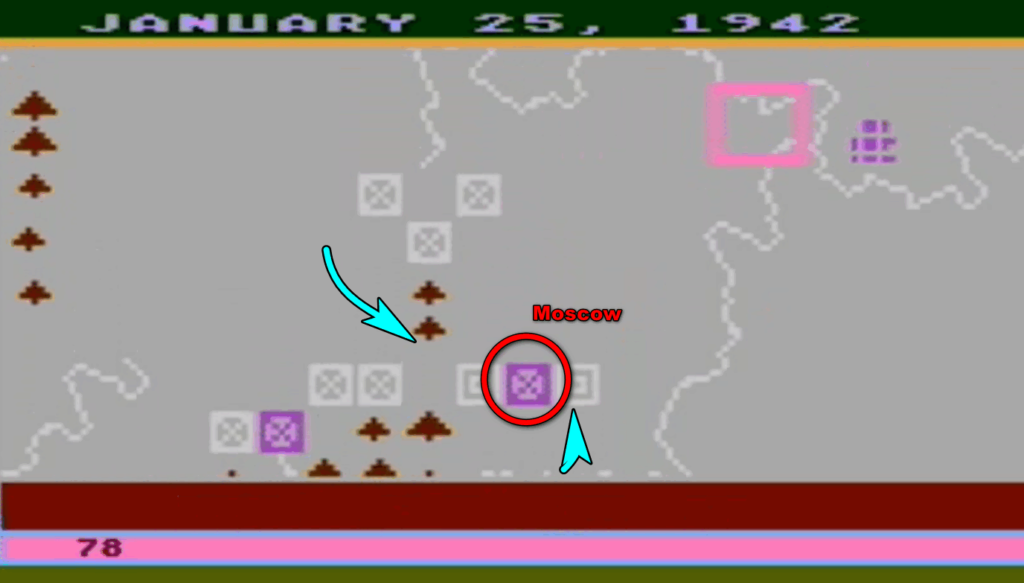
One month later, it is Stalingrad’s turn :
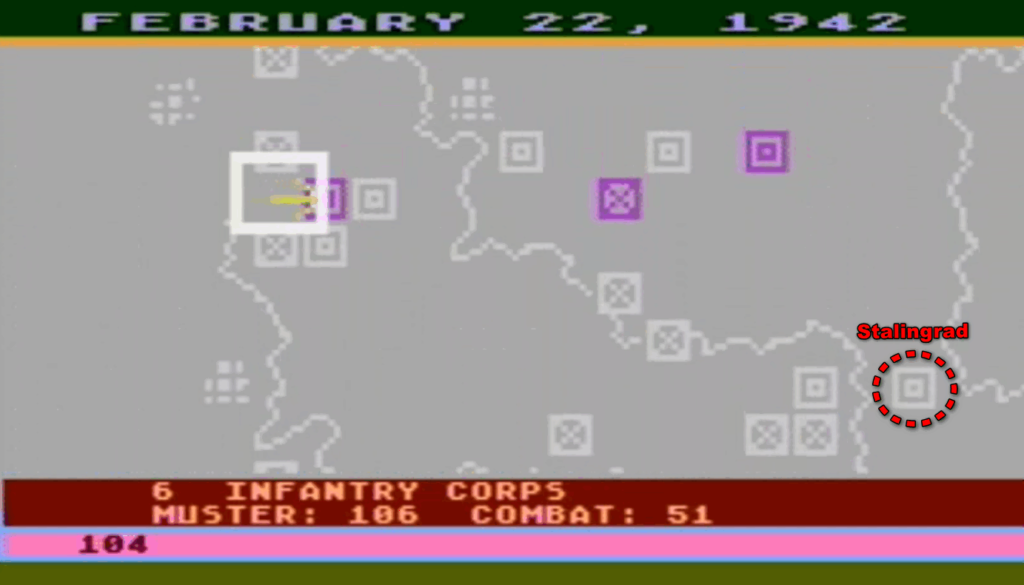
The game ends the campaign late March as the Germans are marching on the Caucasus :


This has been a decisive German victory !
Coincidentally, it is my first victory in the default // “advanced” level of the game – having the correct opening in the first 5 turns or so was absolutely decisive. I would like to give a try in expert mode – which adds unit posture and German air force. There are 5 possible scenarios – tell me if you are interested in any, or if you prefer I just move on.
- The 1941 “expert” scenario, so Barbarossa again. Maybe not the most interesting given we have just been there,
- Chris Crawford’s 1942 scenario,
- One of the three scenarios of increasing difficulty from the 1983 scenario disk designed by Ted Farmer and distributed by APX
- Stalingrad, 30th of September 1942,
- Kursk, 4th of July 1943,
- The last year of the Wehrmacht , 8th of May 1944,
Two notes :
- I will be on holidays for most of August, so no update ! I really wanted to end on Eastern Front 1941 for obvious reasons,
- I am not satisfied with my rating system, so I will probably change it for post-holiday reviews. I am still torn between only grading “fun & replayability”… or not grading anything, trusting the text of the reviews to do the job. Once I am satisfied with my grading system, I will roll back and update the 20 or so rated games for comparability. Tell me if you have any strong opinions on the matter.
11 Comments
The game starts on the first day of Operation Barbarossa. The German army and its Romanian allies are massed on the border, facing the Soviet forces.
And the Finns!
Russia appears appropriately vast. And the Pripet Marshes are in the right place.
Nacht Leningrad!
Nach?
Expert sounds cool. Honestly, the best East Front scenario is Barbarossa. Can you win? The rest of the scenarios are just tank battles for the sake of tank battles. The Soviets are too numerous and dug in for a realistic chance of winning. The challenge becomes “can you do better than the historical outcome?”
Especially anything in 1944-45. I suppose that would be interesting to see if the computer player can get an offensive together or just steamrollers you with brute force.
Indeed, the Finns too but in game terms they cannot attack Leningrad so really they are stuck. No way to move the Finns to say North Africa like in some other WW2 strategy games.
I meant « nach » indeed.
I have no strong opinion as to which additional scenario you play–others know that better–but I really like the look of this game, so doing another one is fine by me.
I’ve honestly never met a rating system I liked, including the one I had to use back when I was a semi-pro game reviewer myself. “Do I recommend playing it?” and “Would I play it again?” are honestly the only useful bits I get out of a morass of numbers.
I can see why this game was considered a big deal – it seems both deeper AND more comprehensible that most of the stuff covered so far.
Indeed. When I read some of Chris Crawford’s claim that it was « the best wargame of its time » (and still for at least a couple years) I thought it was maybe another dev not being objective about his product ; having played all the strong contenders up to the first release of Eastern Front I can already say it is the best wargame at its release, and given it is years in advance it may still be in 1982 and even part or all of 1983. Honestly, even today it is fun as there is no UI horror to stop you from enjoying it Even by today’s standard its UI is extremely slick as you can do everything with 1 button and the controller, except cancel (« space bar ») and next turn (« start button »).
More!
I assume Barbarossa will come up time and again, so it would be interesting to know which books each game uses as their sources, and if the evolution of computer wargames follows the much increased knowledge of the Soviet side once the Soviet Union collapsed and the archives were opened up to Western historians in the early 90s.
I’m far from an expert, but from what I’ve read, early wargames had a tendency to be far too uncritical of post-war German accounts and memoirs.
The Soviets locked up their archives. Everything was a secret in their society, remember. Moreover things like the Molotov-Ribbentrop Pact and Lend-Lease were highly sensitive subjects that nobody wanted to bring up. If you wanted to make a wargame, the German memoirs were all that was available.
This may be because Gaullist and post-Gaullist France was a bit unique during the Cold War, but my father owned several history magazines from the 60s or maybe 70s that included (among other) lenghty memoirs/articles written by Soviet veterans, including very high ranking officers.
For instance I had read this one he had : https://www.biblio.com/book/historia-magazine-seconde-guerre-mondiale-numero/d/1318020310 and it was written only by Soviet/Russian folks and then translated.
Anyone ever play 1941 Frozen Front? This game looks like a 1980s version of it.
Handygames’s 1941 Frozen Front for mobile ? Except for the theme (Eastern Front) it does not share much with Eastern Front 1941. 1941FF is a mission-based, alternative turn, tactical game, a successful Panzer General like for mobile. EF1941 is a simultaneous turn strategic game. Two different animals. Happy to see someone refer to 1941FF, à game with less success and fame than it deserves (its follow-up (1942 Pacific Front, 1943 Deadly Desert and and 1944 Burning Bridges) were weaker, or too short for the 1943 one).